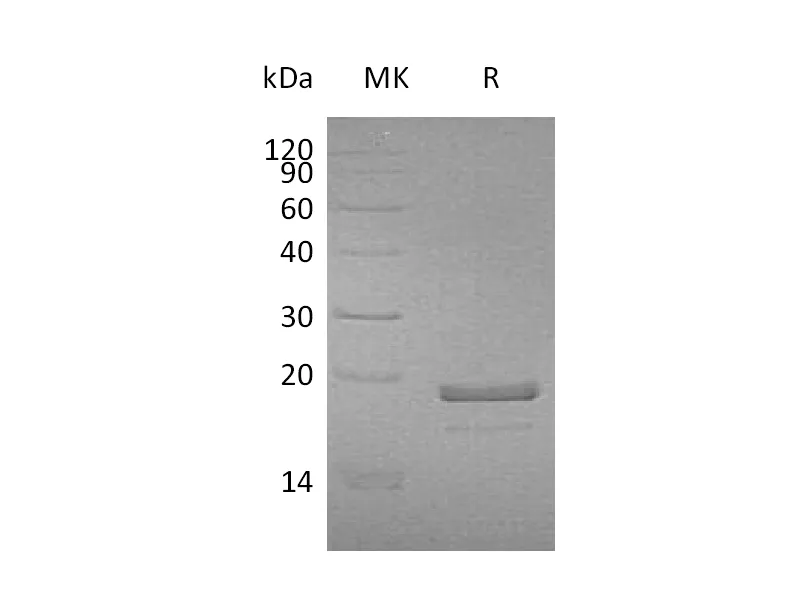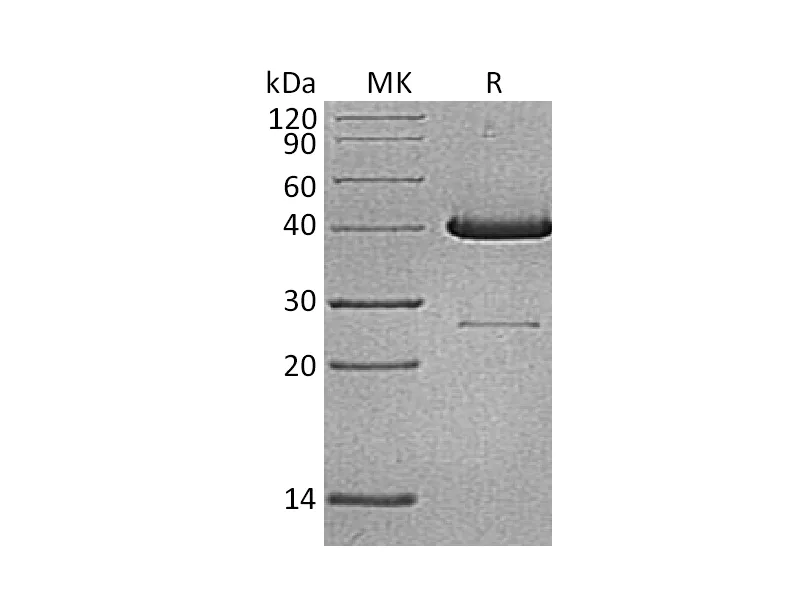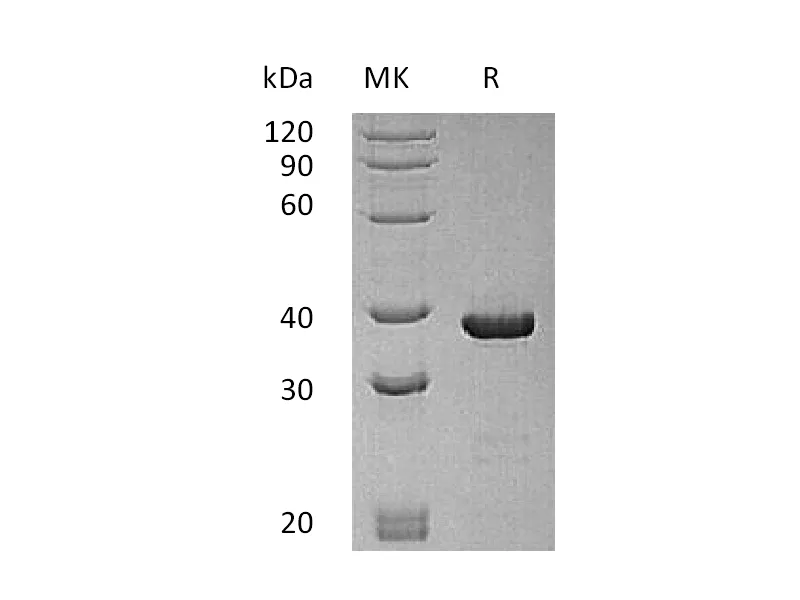| 产品名称 |
Recombinant Mouse EDAR (C-Fc) |
| 英文名称 |
Ectodysplasin Receptor/EDAR |
| 纯度 |
Greater than 95% as determined by reducing SDS-PAGE |
| 内毒素 |
<1 EU/µg as determined by LAL test. |
| 蛋白构建 |
Recombinant Mouse Ectodysplasin Receptor is produced by our Mammalian expression system and the target gene encoding Glu27-Ile189 is expressed with a human IgG1 Fc tag at the C-terminus. |
| Accession |
Q9R187 |
| 表达宿主 |
Human Cells |
| 种属 |
Mouse |
| 预测分子量 |
44.7 KDa |
| 制剂 |
Lyophilized from a 0.2 μm filtered solution of PBS, pH 7.4. |
| 运输方式 |
The product is shipped at ambient temperature.Upon receipt, store it immediately at the temperature listed below. |
| 稳定性&储存 |
Store at ≤-70°C, stable for 6 months after receipt.Store at ≤-70°C, stable for 3 months under sterile conditions after opening. Please minimize freeze-thaw cycles. |
| 复溶 |
Always centrifuge tubes before opening.Do not mix by vortex or pipetting.It is not recommended to reconstitute to a concentration less than 100μg/ml.Dissolve the lyophilized protein in distilled water.Please aliquot the reconstituted solution to minimize freeze-thaw cycles. |
| 分子别名 |
| Tumor necrosis factor receptor superfamily member EDAR; Anhidrotic ectodysplasin receptor 1; Downless; Ectodermal dysplasia receptor; Ectodysplasin-A receptor |
| 背景介绍 |
| Ectodysplasin A receptor (EDAR) is a type I transmembrane protein of the TNF-α receptor superfamily which plays a key role in ectodermal differentiation. EDAR was encoded by the mouse downless gene and defective in human dominant and recessive forms of autosomal hypohidrotic ectodermal dysplasia (EDA) syndrome. The extracellular domain of EDAR contains 14 cysteine residues, six of which approximate the TNFRSF cysteine-rich region, the cytoplasmic domain contains a region with homology to the death domains found in other TNFRSF members. EDAR has been suggested to be an early and important promoter of placode development in all ectodermal organs, such as uch as hair follicles, teeth and sweat glands. EDA-A1, the A1 isoform of EDA, is the EDAR ligand. EDA and EDA are implicated in appendage development by the cloning of a gene underlying hypohidrotic ectodermal dysplasia (HED) in mouse and human. HED is characterized by agenesis or malformation of ectoderm-derived appendages, such as teeth, sweat glands and hair follicles, while the skin itself develops normally. |
注意事项
本司产品仅用于科研,不用于临床诊断和治疗




